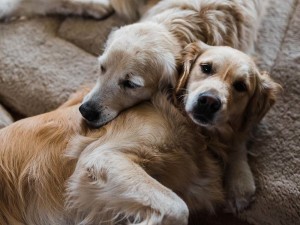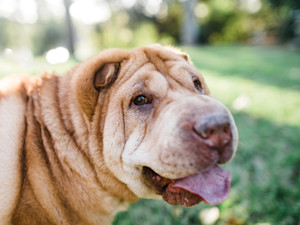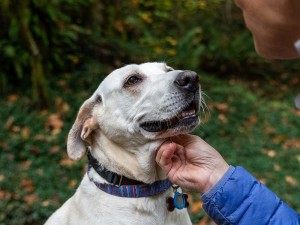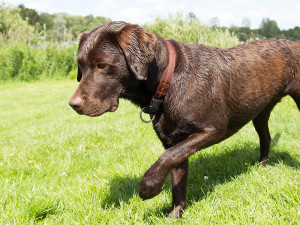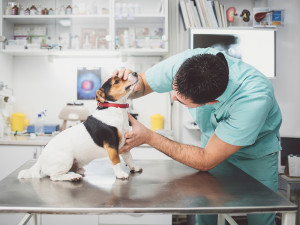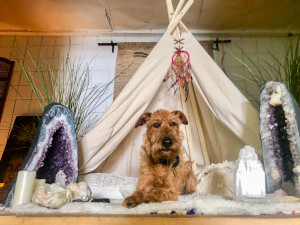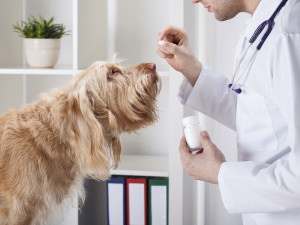Oncotect is Revolutionizing Canine Cancer Screenings
One in four dogs will develop a form of cancer. This new test hopes to catch cases earlier and increase success rates.
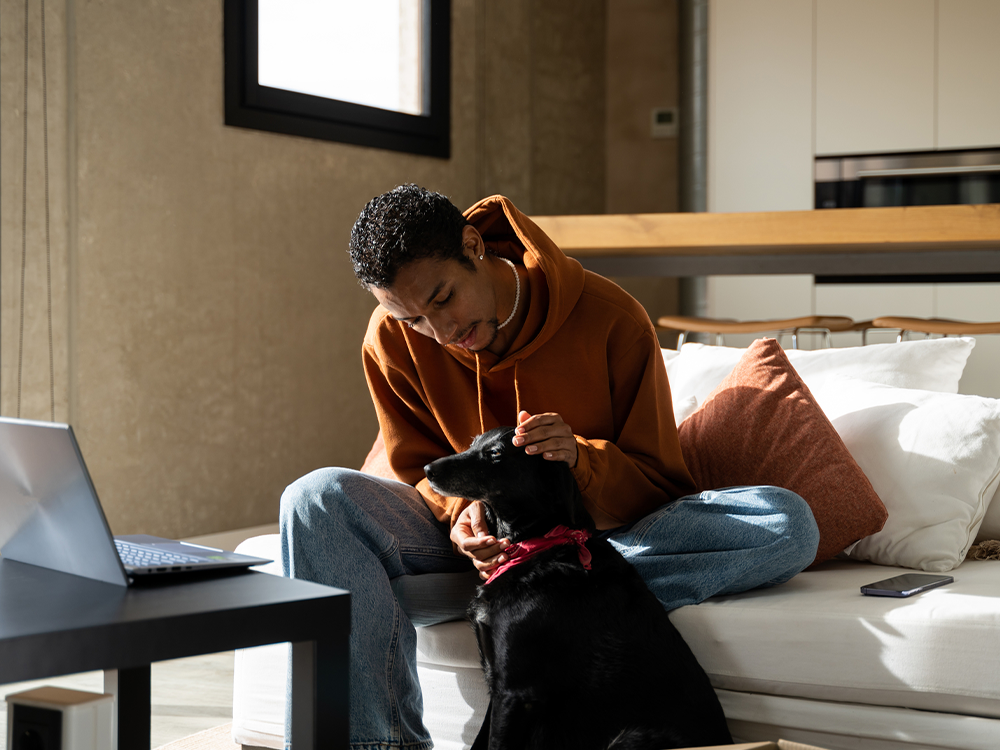
Share Article
Not unlike their human counterparts, dogs are often faced with the physical uncertainty and emotional catastrophe of canceropens in a new tab. According to the American Veterinary Medical Associationopens in a new tab, one in four dogs will develop a form of cancer at some point in their lives. In fact, the organization reports that once a dog reaches 10 years of age, the odds of them developing cancer are effectively a coin flip.
“There are over 84 million dogs in the U.S. alone and the biggest threat to their health and well-being is cancer,” says Chan Namgong, founder and CEO of Oncotectopens in a new tab, an emerging company that’s attempting to put a few dents in those numbers. Namgong and his team have devised a method of routine cancer screening in the hopes of catching cases earlier to increase the chances of successful treatment. “As any veterinary oncologist will tell you, the best chance of fighting cancer and extending our pets’ lives is early detection and diagnosis, but there just isn’t a widely available option to date,” he adds.

Get (totally free) deals for food, treats, accessories, tech, and way more pet parenting must-haves.
opens in a new tabIn 2019, Namgong started Oncotect to change that. Contrary to the standard blood tests that are regularly used, Oncotect’s option is non-invasive and doesn’t use needles. Instead, the process is urine-based, which makes it a less uncomfortable experience for the animal. Not to mention, these tests are much cheaper. They are currently only available at select veterinary offices in the Raleigh and Durham area of North Carolina, where Oncotect is based, but Namgong plans to have the company’s tests offered online for all pet parents come this September.
Kinship spoke with Namgong, along with Oncotect’s resident veterinary oncologist, Dr. Steve Shaw, about the company’s exciting proposition and all the good it could do for our pups.
What inspired you to develop an alternative means of cancer screening in dogs?
Chan Namgong: My mom was diagnosed with breast cancer about six years ago and, thank God, she’s cancer free now. But during that time, I had the opportunity to read a lot about cancer detection, cancer diagnostics, and cancer treatment. Then one day I came across this scientific journal where a group of Japanese scientists used C. elegansopens in a new tab to detect cancer in human urine. I thought that just sounded too good to be true. I wanted to find out if that was true, but instead of going to human medicine, I wanted to look for pets. No cancer screening tests were available for companion animals. So, I wanted to find a solution for our furry friends.
C. elegans are roundworms; how do they help detect cancer in dogs?
CN: The science behind our technology relies on these little, microscopic nematodes called C. elegans. These little creatures have an incredible sense of smell with even more olfactory receptors than dogs, despite their small size…they can actually detect cancerous metabolites when exposed to urine that contains them. Our novel patent-pending process is able to quantify the olfactory neuronal response with a high accuracy, which enables us to accurately assess the patient’s risk of cancer.
Today, we’ve tested over 350 dogs of all shapes and sizes, and we’ve been proven to accurately detect for most common canine cancers at 83 percent sensitivity and 96 percent specificity. These results compare favorably with competitive blood tests.
How does that process work?
Dr. Steve Shaw: Within the urine samples of cancer patients, there are organic compounds that are found. These nematodes, the C. elegans, are attracted to those compounds. The founding principal test involved putting the urine samples in a petri dish along with a control sample, so the urine sample of the patient and then another urine sample that’s known not to have cancer. Then we added in the actual worms themselves and watched them migrate. After about an hour or so, you see which side of the petri dish they tend to migrate to and duplicate that test seven times total to make sure that everything is consistent.
So, depending on the number of worms, you have a different level of confidence as to whether or not this looks like a dog without cancer, versus one with a moderate risk of possibly having cancer, versus one with a high risk of having cancer. We’re now formalizing a microfluidicsopens in a new tab test that will help to streamline this process a bit better.
CN: The microfluidics test is the next frontier in our cancer detection technology; it’s a lot more efficient. This is what we have a patent pending on that we are going to use. Instead of actually waiting for C. elegans to migrate, we are actually measuring the intensity of the neuron in C. elegans and how they’re responding.
Is there a less scientific way to describe it?
CN: You’ve probably heard that trained dogs can detect cancer in humans. They can do that because cancer cells produce a particular smell that is different from normal cells and that’s how dogs are able to differentiate the cancer patients and non-cancer patients in human medicine. We use very similar mechanics. We are detecting cancer metabolites that are in the urine, and we’re using C. elegans to detect those metabolites.
What issues with traditional testing does this avoid?
CN: Traditional diagnostic tests, like biopsies, ultrasounds, and radiographs are really expensive and invasive. And, as Dr. Shaw can tell you, they’re not done regularly or on a routine basis because they’re not practical for early screening. There are blood tests, but they’re also expensive and invasive, like $1,000 retail. Plus, you have to bring your dog to the hospital for it. We’re focused on urine-based tests because pet parents can actually collect the samples at home with no needles necessary so it’s really a more pet-friendly approach.
SS: It doesn’t necessarily mean that you don’t have to do those other tests like biopsies or X-rays because if an Oncotect test does come up positive, it doesn’t tell us exactly which type of cancer the dog has. You still need to go further to take a biopsy or to screen to see where it is in the body. All those tests are still important, it’s just that this helps you to identify the cancer earlier. This is a general screen, so that if it comes back negative then you don’t necessarily have to do all those other tests which would cost a lot of money and potentially can be more stressful for the animal.
Once widely available, how early in a dog’s life should pet parents be starting these screenings, and how often?
SS: It depends on a couple of different things from the breed of the dog to its genetic background, as well as how proactive the owners want to be. In general, we see cancers show up in dogs at pretty much any age. It’s not very common, but there are some really unlucky dogs that will develop cancer at the age of one or two or even as puppies. But more often we tend to see dogs around age five and up that start developing cancers. Certain breeds, like Golden Retrievers, Boxers, and German Shepherds, are a lot more likely to develop cancers, so that’s also something to consider. I would say age five is a good starting place and to test yearly.
Could these early tests potentially add years to a pet’s life?
SS: It certainly could. It really depends on the type of cancer and when it’s caught. The idea of early detection is the earlier you catch it, the more of a chance you could potentially catch it before it spreads.
What’s the end goal of Oncotect?
CN: We want to extend our services to other animals. Specifically, we’d like to study cats and horses; it’s just that collecting feline urine samples is more challenging than collecting canine urine samples. They’re also not as widely available, so that’s what’s holding us back. But we definitely want to study cats and horses.
And we really want to see our company, our tests become the benchmark tests to be included in all senior panel tests. When you take your dog for a senior panel exam, wouldn’t it be wonderful if a test was included? Then you’d never put your dog behind the eight ball as far as cancer goes. Each day we spend with our pets is a gift and we want to help our pet parents everywhere get more of them to enjoy together.
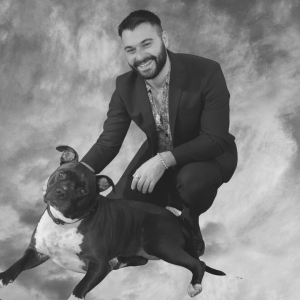
Sean Zucker
Sean Zucker is a writer whose work has been featured in Points In Case, The Daily Drunk, Posty, and WellWell. He has an adopted Pit Bull named Banshee whose work has been featured on the kitchen floor and whose behavioral issues rival his own.
Related articles
![Brown Labrador lifting front leg]() opens in a new tab
opens in a new tabHow to Get a Head Start on Your Pet’s Health
Spot lumps, limps, and lethargy early on.
![A vet examining the neck of a small dog on the examination table]() opens in a new tab
opens in a new tabLymphoma Cancer in Dogs: What You Need to Know
Find out what causes lymphoma in dogs and how you can help your pup.
![A woman in a bright yellow-orange sweater holding a striped kitten in one hand and a credit card in the other while using her laptop in front of her]() opens in a new tab
opens in a new tabHow to Get Help With Vet Bills for Dogs Who Need Surgery
Worried about the cost of making your pet feel better? Help is on the way.
![Dog sitting in a tent surrounded by candles and crystals]() opens in a new tab
opens in a new tabAlternative Therapies Can Zen Out Your Pet, Too
Wellness treatments like acupuncture, Reiki, and sound baths are helping pets heal and bond with their parents.
![A vet holding medicine near a dogs face]() opens in a new tab
opens in a new tabHow to Find a Veterinary Specialist
Just like your doctor would refer to you a specialist for expert care for a complicated issue, your vet may do the same for your dog.
![black and white dog looking ill laying on couch]() opens in a new tab
opens in a new tabWarning Signs Your Dog Needs to Go to the ER — Stat
Trust me, I’m a vet.

